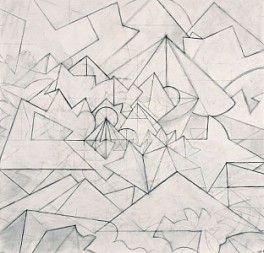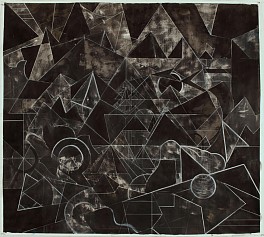CityArts: Celia Gerard: Regions of Unlikeness
February 8, 2011 - Mario Naves, CityArts
"In his seminal essay “Cezanne’s Doubt,” philosopher Maurice Merleau-Ponty wrote of the French artist’s painterly process, of how vacillating fields of chiseled brushstrokes simultaneously defined and questioned the objects at hand. Merleau-Ponty concluded that for Cezanne “‘conception’ [could not] precede ‘execution.’” The results, rigorously analytical and forever skeptical, set into motion the idea of the canvas as a public accounting of an artist’s tussle with uncertainty.
"Having filtered its way through Modernism—roughly speaking, from Cubism to Giacometti to Action Painting to any number of artists eager to flaunt their egos and erasers—“Cezanne’s Doubt” has become as much a cliché as any other approach to art-making. That is, until someone comes along and demonstrates why it is, in fact, viable and vital. Celia Gerard’s black-and-white mixed media drawings, at Sears-Peyton Gallery, remind us that tradition is for the taking should an artist have the gumption to follow through on it."
Download Article (PDF)



